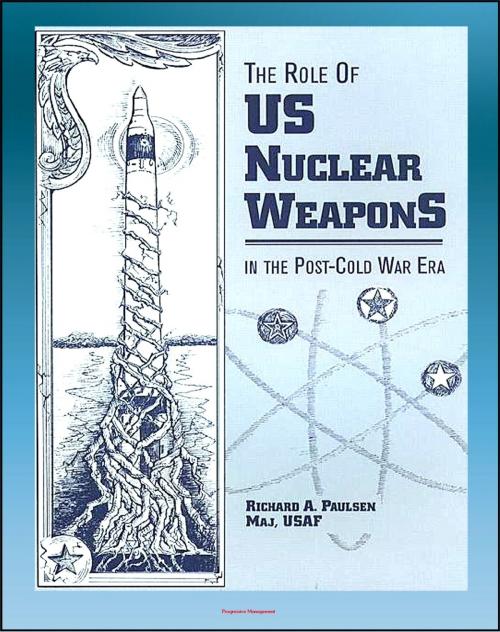The Role of US Nuclear Weapons in the Post-Cold War Era: Tactical and Strategic Nuclear Warheads, WMD Deterrence, START Agreements and Treaties, Force Levels, Delivery Systems, Disarmament Proposals
Nonfiction, Social & Cultural Studies, Political Science, Politics, Arms Control, History, Military, Nuclear Warfare| Author: | Progressive Management | ISBN: | 9781476159959 |
| Publisher: | Progressive Management | Publication: | April 6, 2012 |
| Imprint: | Smashwords Edition | Language: | English |
| Author: | Progressive Management |
| ISBN: | 9781476159959 |
| Publisher: | Progressive Management |
| Publication: | April 6, 2012 |
| Imprint: | Smashwords Edition |
| Language: | English |
In the Preface, the author writes:
I initially proposed my research to look at START II levels and beyond, focusing on the question, "How low can we go?" As I witnessed President George Bush's unilateral initiatives and the Washington Summit agreement, I realized that nuclear weapons levels over the next decade already had been decided. I began to ask myself, "On what are these tremendous force reductions based?" and "Does the United States have a plan for when nonproliferation efforts fail?" These questions led me to my research topic, "What is the role of US nuclear weapons in the post-cold war era?" One thing is for sure: there are a multitude of opinions being expressed.
I began my research with an examination of the role of nuclear weapons from a historical context. I then surveyed current unclassified national guidance regarding nuclear weapons. Following this, I examined the literature for what various proposals were being offered in the public sector as the future for US nuclear weapons. Due to the tremendous magnitude of literature on nuclear weapons, policy, strategy, and arms control, I chose to limit my coverage to a sampling of proposals that have been made over the last few years. I then looked at possible threats the United States may face over the next couple of decades. I limited this discussion to weapons of mass destruction, since these threats are most likely to draw a US nuclear response. Finally, I proposed some overall nuclear force characteristics that would provide the United States with a viable deterrent for the post-cold war era by maintaining the capability to respond across the full spectrum of conflict.
Contents: Chapter 1 - Historical Overview of US Nuclear Policy * Chapter 2 - US Nuclear Policy after the Cold War * Chapter 3 - Current Thinking on the Future Role of Nuclear Weapons * Chapter 4 - The Threat—Weapons of Mass Destruction * Chapter 5 - US Nuclear Forces for the Post-Cold War Era * Chapter 6 - Conclusions and Recommendations
In the Preface, the author writes:
I initially proposed my research to look at START II levels and beyond, focusing on the question, "How low can we go?" As I witnessed President George Bush's unilateral initiatives and the Washington Summit agreement, I realized that nuclear weapons levels over the next decade already had been decided. I began to ask myself, "On what are these tremendous force reductions based?" and "Does the United States have a plan for when nonproliferation efforts fail?" These questions led me to my research topic, "What is the role of US nuclear weapons in the post-cold war era?" One thing is for sure: there are a multitude of opinions being expressed.
I began my research with an examination of the role of nuclear weapons from a historical context. I then surveyed current unclassified national guidance regarding nuclear weapons. Following this, I examined the literature for what various proposals were being offered in the public sector as the future for US nuclear weapons. Due to the tremendous magnitude of literature on nuclear weapons, policy, strategy, and arms control, I chose to limit my coverage to a sampling of proposals that have been made over the last few years. I then looked at possible threats the United States may face over the next couple of decades. I limited this discussion to weapons of mass destruction, since these threats are most likely to draw a US nuclear response. Finally, I proposed some overall nuclear force characteristics that would provide the United States with a viable deterrent for the post-cold war era by maintaining the capability to respond across the full spectrum of conflict.
Contents: Chapter 1 - Historical Overview of US Nuclear Policy * Chapter 2 - US Nuclear Policy after the Cold War * Chapter 3 - Current Thinking on the Future Role of Nuclear Weapons * Chapter 4 - The Threat—Weapons of Mass Destruction * Chapter 5 - US Nuclear Forces for the Post-Cold War Era * Chapter 6 - Conclusions and Recommendations















